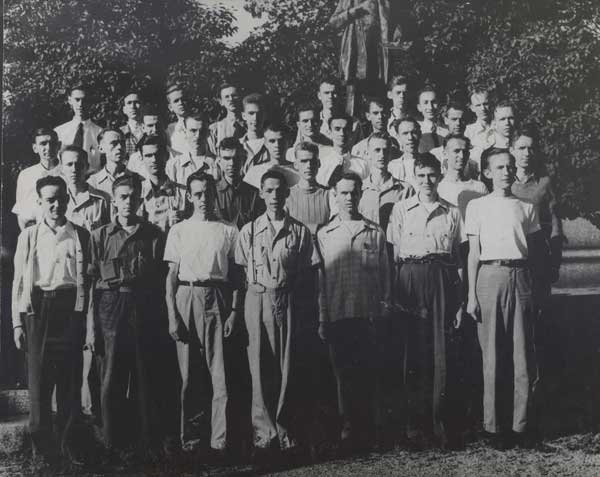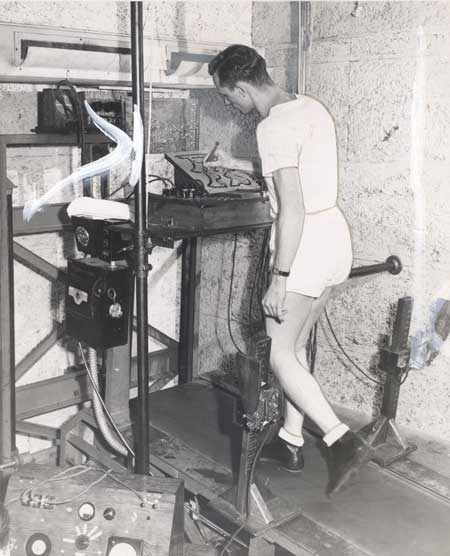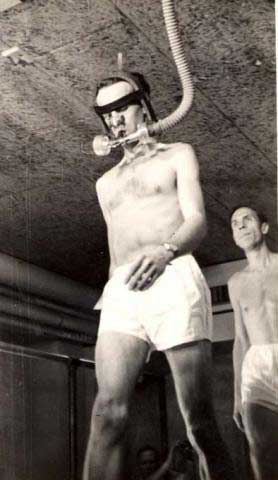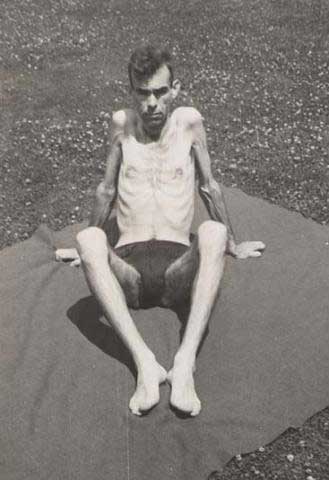By Haley Steinhilber, archival intern

After the mistreatment of conscientious objectors by the military and government in World War I, peace groups such as the Mennonites, Society of Friends, and Church of the Brethren discussed the creation of a program that would exempt them from a future draft. Civilian Public Service was formed in 1940 as an alternative noncombatant way for conscientious objectors to serve the United States during World War II. Programs sponsored by CPS included work in agricultural service, mental hospital service, and numerous other projects supported both by the state and privately. The Brethren portion of the program was overseen by Brethren Service Committee.
One project directed by the Brethren was based at the University of Minnesota, with the intention of studying the effects of starvation and rehabilitation. This project became known as the “Minnesota Experiment.”1 It must be called attention that the starvation experiments were not the only tests completed on human subjects in the CPS program. There are also references to projects that study the human reaction to salt water injections, dehydration, intense heat (Pinehurst, NC), cold exposure and protein deficiency (Rochester, NY).2

The Minnesota Experiment began in November of 1944 with thirty-six Civilian Public Service volunteers selected from all over the United States. Led by Doctor Ancel Keys, the purpose of the research was to “create a controlled miniature of the kind of famine which decimated western Holland.” There was hope that the results would aid the efforts of relief programs in devastated areas, focusing primarily on the war conditions that were currently in north central Europe. 3
The doctors concentrated on answering questions that dealt with the physical, mental, and emotional effects that occur during starvation, with emphasis on the rapidity of deterioration.4 The first five months served as the control period, in which the men had a controlled diet and regular hours of sleep. Adherence to the program was based on the honors system at first, although as the experiment continued they introduced a “buddy system,” to keep the subjects under surveillance. None of the men broke the diet, according to the test results that reflected the expected weight losses and starvation effects. 5

The tests revealed several important changes in the men, and was successful in emulating the effects of a European famine. The average weight loss for the men rested at around 40 pounds, their faces became gaunt, and their skin yellow.6 The experiment results provided significant information during the rehabilitation of concentration camp victims and other famine stricken areas after the close of World War II. Many inadequacies of former United States rehabilitation programs were uncovered as a result. 7
Some quotes taken from the diaries of the participants display the shifting emotional responses as the experiment progress:
“I find I am becoming more and more frank about showing my emotions and indicating my stripes, particularly at the table. I got up and left the table, telling —- —— that I did not appreciate his licking his plate so noisily. I told him that he sounded like a d— cow.”
“Stayed up until 5:00 A.M. last night studying cook-books. So absorbing I can’t stay away from them.”
For more information on the participants of Civilian Public Service, visit civilianpublicservice.org

1Leslie Eisan, Pathways of Peace, (Elgin, Illinois: Brethren Publishing House, 1948), 17-48.
2Swarthmore College Peace Collection, Human Guinea Pigs in CPS Detached Service, 1943-1946, List Compiled by Anne M. Yoder, Archivist, November 2010. http://civilianpublicservice.org/camps/115
3Leslie Eisan, Pathways of Peace, (Elgin, Illinois: Brethren Publishing House, 1948), 296.
4Keys, Brozek, Henschel, Mickelsen and Taylor, “Experimental Starvation in Man,” University of Minnesota, October 15, 1945, 8-9.
5Leslie Eisan, Pathways of Peace, (Elgin, Illinois: Brethren Publishing House, 1948), 300.
6Leslie Eisan, Pathways of Peace, (Elgin, Illinois: Brethren Publishing House, 1948), 304.
7Leslie Eisan, Pathways of Peace, (Elgin, Illinois: Brethren Publishing House, 1948), 311-312.